While living in America and working at Nordstrom (way back when), I remember many of the Italian brands making shoes in what looked like a cross between calfskin and patent. Prada, Gucci and Dolce & Gabbana loved the stuff! And to be honest, as I was young and a bit naive, I remember being quite attracted to these shiny things. They had all of the glitz & the glam and thus looked the part of an expensive Italian shoe. Little did I know at the time, however, that this so called shiny leather was promoting a common misconception of high quality when in reality it meant something very different, a secret that was only really understood by those few ‘in the know.’ After having moved to Italy and then to England, did I start to wise up to all of these practices that shoe brands often do, in order to keep the costs low but the retail prices high. One of these practices, that I want to share with all of you not yet ‘in the know,’ is the use of bookbinder leather, also known as corrected grain (among a million other names).
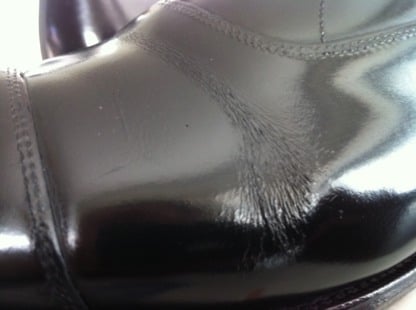 |
| these cracks don’t come out and by the looks of the shoe it has only been worn a few times….thus is the downfall of bookbinder leather… |
You see, what bookbinder really is, is a coating (much like patent) that is applied onto the shoes at the factory. It is similar (or is in fact) like an acrylic coating that they paint over the actual leather. They then let it dry (just like women polishing their nails) until it hardens and once done, it transforms into this new surface that we all know, that has a bit of extra gloss and in my opinion a very plastic-like look. No matter what quality of leather that you have going underneath the brush of death, it will transform into that smooth surface and make it look all the same….That being, one could theoretically apply the bookbinder treatment over the lowest grade leather, allow it to do its magic and then voila, you have a shoe that can be charged the same as a high grade calf skin, leaving consumers non the wiser. And this is frequently what happens. Now don’t get me wrong, if a company is doing the bookbinder treatment just for the sake of a different aesthetic to the shoe, but using the same grade of calfskin underneath, then so be it. But in reality, it does not make sense to cover a high grade calfskin with that stuff as you are simply ruining the calfskin and it is therefore frequently not the case that they are doing so in such a manner.
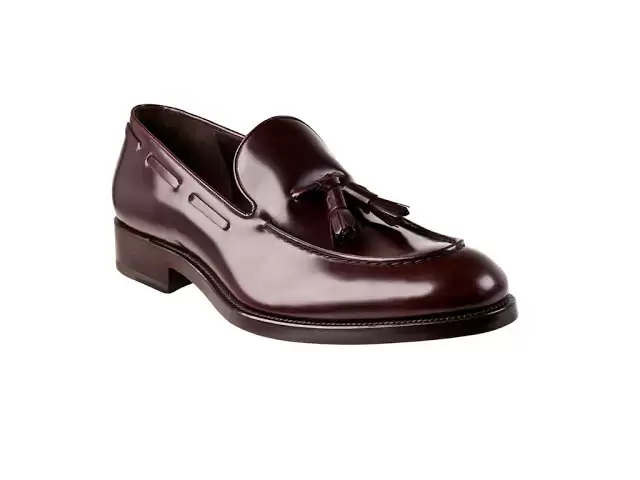 |
| Bookbinder above vs. calfskin below by Fratelli Rossetti…. |
Now, just to be fair, allow me to shed some light on the positives that go along with the negatives. In England, you frequently see bookbinder leather and I believe that for one it is due to the fact that the weather can be quite dismal and with that, the rain can come and never seem to leave. The good thing about bookbinder is that it is a coated treatment that is in fact protecting the leather. Water therefore does not really set into it as it would a calfskin shoe as there are no more pores to do so. Another positive in some people’s minds is the fact that it has this high gloss effect to it and therefore always remains quite shiny and thus easy to clean as it is not susceptible to stains. Now the problem is that these positives have their downfalls. Because it is a coating that covers the leather that means that it is untreatable in every which way (in terms of maintenance). Once you get those white/black scuff marks on them, there is no cleaning them off or polishing them out. Sure you might be able to use a spirit to do so, but then you also run the risk of stripping off the bookbinder affect and then you have a real problem on your hands. Another problem that is much bigger in my eyes is the fact that due to its plastic-like nature, it creates quite a rigid surface that is then more susceptible to cracking much easier than your average calfskin, not to mention the heavy creasing that it creates too. And once it cracks it is as good as dead as there is no repairing it. And believe me, it always cracks eventually…. (far quicker than a calfskin)
Now I don’t have a problem (even though it is not to my personal liking) with shoemakers that charge between ?100-?200 for a pair of their shoes in the bookbinder treatment, but what I do have a problem with is the companies that charge upwards of +?300 for a pair of bookbinder leather shoes. It is simply not justified but is frequently done (particularly by the Italian owned companies and/or designer brands), then labeled as some fancy-smancy leather and sold at an extortionate price. That shoe will then not last more than a few years (assuming regular wear), as the upper will inevitably crack and you will have to go back and buy a new shoe, when it’s calfskin leather counterpart that probably cost the same in another brand would have lasted you 3-4 times the amount of time. Therefore be aware of what you are buying. Don’t let a salesman or a brand trick you into thinking that the glossy leather is something of mega high quality because it is not. A good calfskin will last you far longer and look much nicer over the long run. Bookbinder is used simply as a way to keep the costs low. It is not a favor done to you, the consumer, so don’t be fooled….. And think about why the respectable, high-quality brands don’t use it….

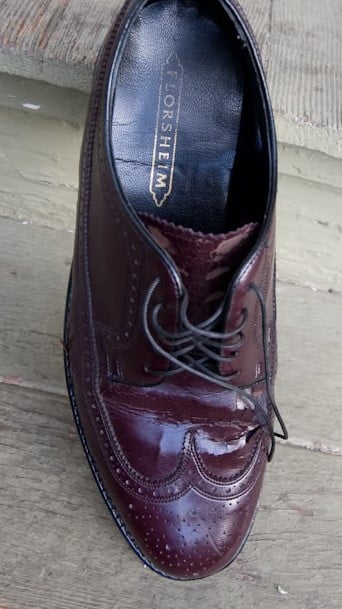
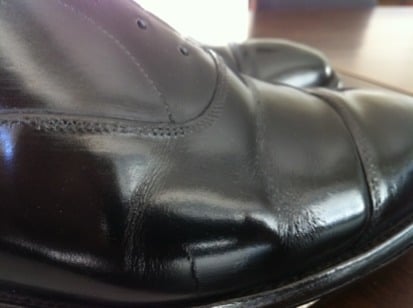
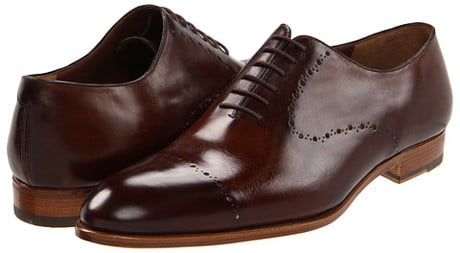
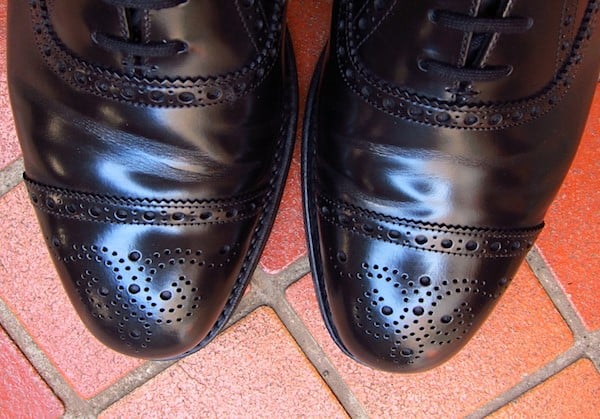
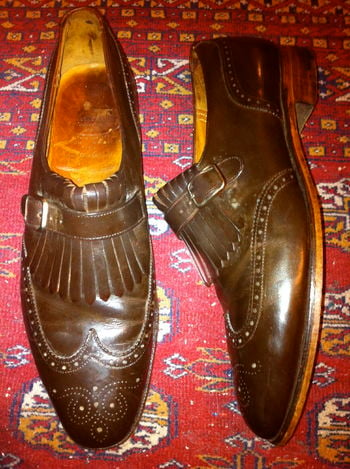




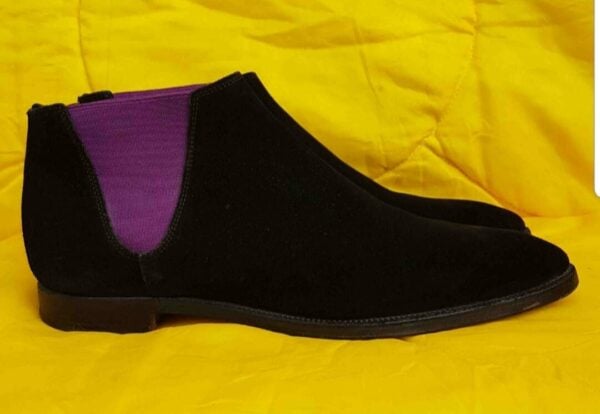
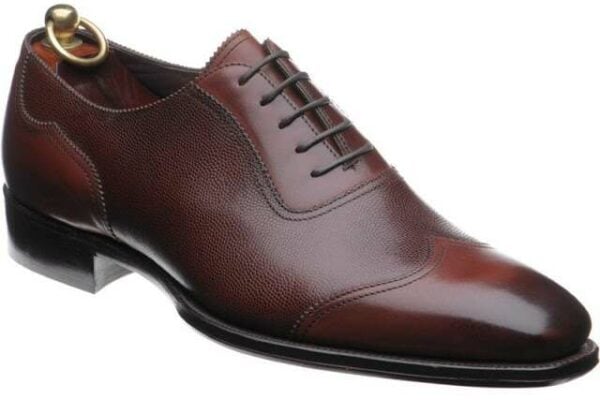
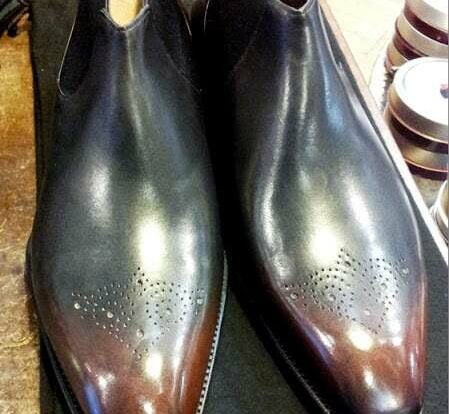

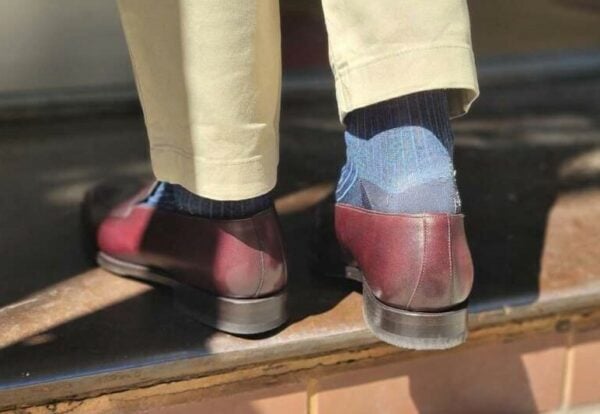
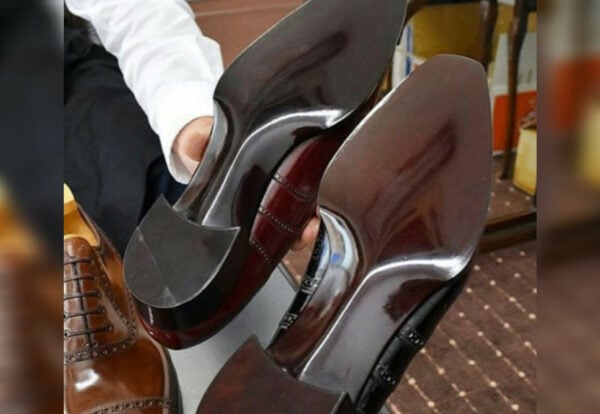
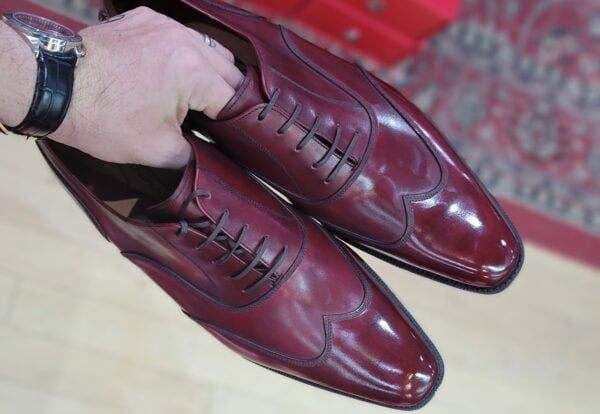
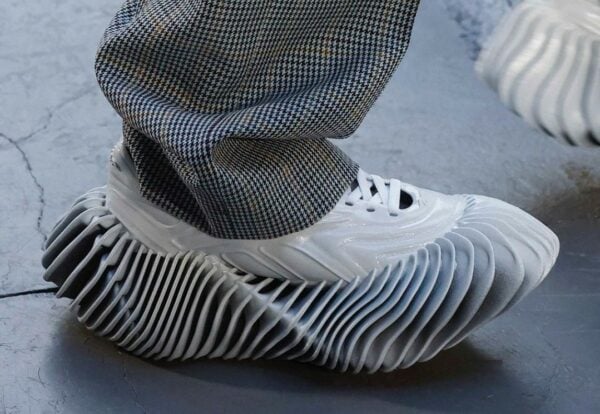
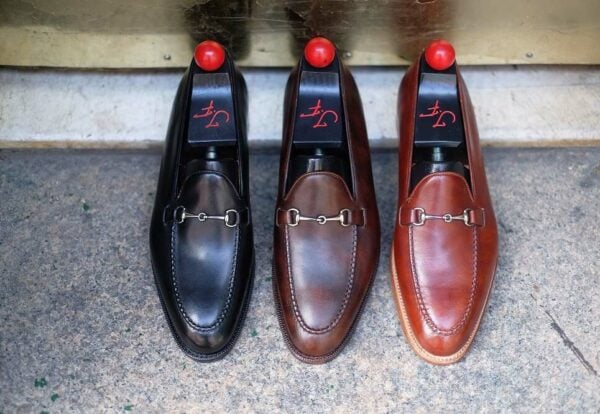
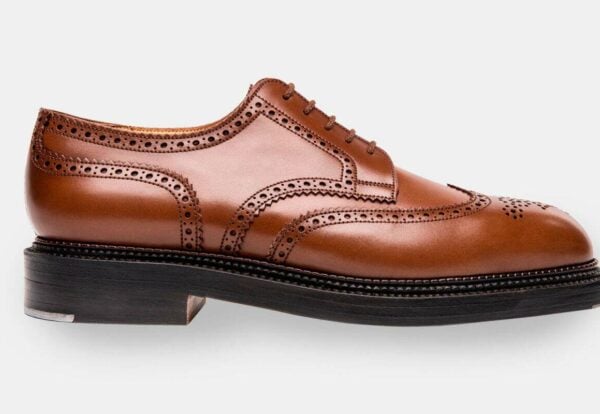
Hi Justin,
thanks for your experience. I really confuse vegentable tanned leather and chrome tanned leather for shoes upper. Can you help me,please?
unfortunately I cannot really help you by description…most uppers are chrome tanned leather as it is far easier to work with, holds it’s shape better and is not as easily affected (i.e. stains, water damage etc…). Most lining are Veg. tanned leathers….in reality it is not something to worry about….a good leather is a good leather, no matter how it was tanned….
Fantastic post, Justin! To add to your last point, a lot of companies in that lower price range also offer a choice in the same model between “polished” (another euphemism for binder) and “calf” i.e. natural, un-coated leather. Some prefer the easy shine, some prefer the supple, dull glow. Barker do this, for instance, with some of their shoes, and the price is the same. I agree with you; it’s when you see supposedly “high end” shoes in this category, that you feel a strong sense of injustice.
Glad that you enjoyed it Alex!
I really love this article again, it is like you say, that you give information man out there are yearning for. I would avoid this plastic gloss today anyway, but it is still interesting to know more about it.
Because, how much sadness comes out of the not knowing. I once had a very nice pair of shoes in the 1990s, they where boots in black, oxford stile, and they obviously had Bookmakers on them. It was ok after all, because they cost only 180 DM than, so something like 90 Euros today. They where some discount-made, labelled �Brocker Wall Street� and �Made in Italy�. After one month of wear, the surface started to crack strongly near the toes, and I thought, this was the end. It was not. It came out, that salts had accumulated under the plastic coating. They cracked open the surface like burning wounds. It looked weird. But I loved the shoes so I continued wearing them on odd days and I continued polishing them from time to time. One day, the tortured surface became better. I polished them more often and nicer now. Finally, I had a quite nice surface all over the whole shoe. I wore it a long time. Many people asked me about this shoe and they said, how beautiful it was. The shoe died one day, because the inside was very badly made and I had to put extra insoles into it. These Insoles started to saw on the heel-leather of the shoe, and I never noticed that. One day it opened up the whole shoe at one of the heals, and that was it. I still miss these shoes.
What is sad about the story is, that you love your shoes. And you put a lot of work and patience into them. And, if they are of a bad upbringing, meaning made badly in a mass-production-factory, this love is put into the shoe but the shoe can try as hard as it wants � it is already on deaths row. It is nativity, as you say, that you buy such shoes in your younger days. And you make your experiences. That�s life, I guess. It is still OK, because I bought these shoes on 5s. October 1996 and had to throw them away 10s. January 2008.
Yours Giorgio from Germany.
Thanks for sharing Giorgio and glad that you enjoyed the post! Hopefully you have found a nice replacement pair that you can like just as much!
That’s actually poly-urethane leather or PU-leather which is a very common type of leather. The Poly-urethane film is applied already in the tannery, not in a shoe factory. The thickness of the film differs a lot and you’re allowed to use the leather indication symbol in products if the thickness stays within specified percentages of the leathers thickness in whole. Can’t for the love of god remember what the percentage was.
there must be two types then, as I have personally witnessed it being applied in a factory….thanks for sharing though…
Possibly there is a confusion here between “bookbinder leather” and “bounded leather”? The former is coated leather while the later is a factory-made mixture of leather scraps, polyurethane and whatever else the producer feels like including.
Hi Justin,
This post seems to be a belated, if sound, reply to a query I wrote one year or so ago! Meanwhile, I have gathered that Bookbinder requires more treatment than box calf, and more time to absorb it.
John
Hey John, sorry I took so long to reply….but that it was in a post though as I would never write this much for response in a comment thread…..Bookbinder doesn’t really absorb anything to be honest as the pores in the leather are covered by the artificial application….
Hi Justin, thank you for your insight about shoes. I have a question though. Although full grain aniline-dyed calfskins that are untreated are the best leather you can get, they are very absolvent and are destroyed by drops of wine etc. Whatsmore, in the industry I work in (high-end designer furniture) where full grain aniline-dyed leather is used, a monthly treatment is needed (soap-flake wash). In short they are very maintenance heavy and very fragile. I wonder if the full-grained aniline calfskins used in the shoe industry has some sort of cream-based or wax-based coating used for protection.
Barry, to be honest, I would not know….I have never set foot in a tannery although I would like to…but shoe leather is very different than couch leather
Hi Barry. So, in response to what we have here, furniture leather is quite different to shoe leather. Furniture leather is not so well crafted in comparison to shoe leather. It wasn’t made to encounter weather nor to be made for constant bend and flex movements. Shoe leathers were often heavily stuffed or heavily curried. Furniture leathers are not made to be stuffed or curried. One is expected to be really careful not to do anything silly to a leather couch. This is why many furniture co. switched to chrome tanned leather, because that leather would offer excellent repellent to liquids and cracks via gradual usages.
Another point noteworthy is that calfskins are porous, therefore need extensive waxing and sealing treatments. If calfskin take a light grease or light oil (not emulsified oils) it can repel a lot.
Aha, this article explains what’s wrong with my Prada loafers! Prada describes the finish as ‘Spazzolato’ – it’s much less glossy than patent – see the pic, taken before I tried to ‘improve’ things.
I wanted a better shine. I started by applying Chelsea Leather Food, which seemed to soak in very nicely. This fooled me into thinking that spit-and-polish would work. It didn’t. So I removed the polish with acetone-free nail varnish remover. Now the coating has some matt patches. What are my options? Can I strip all the coating off and end up with normal leather shoes? I also want to use your ‘heat shrink’ method to remove the creases, but I don’t suppose the coating would allow it.
Thanks for a brilliantly informative site. I’m haunting charity shops, looking for some shoes to rescue.
to be honest, i have never tried to strip off the finish of one of these shoes so it would be hard for me to say what you should do. It depends on how bad the surface has removed. If it is quite noticeable, then yes you might want to give it a go over the entire shoe, but definitely do not try the heat shrink method…that won’t be good for that finish
Too late, I’ve already tried the heatshrink! Amazingly it worked, the coating was unaffected and the deep creasing disappeared. The glue holding the sole on melted in places, but I think that can be fixed easily enough.
well i am happy to know that it at least worked
Hi Justin,
This was insightful…
Can you still polish ‘Polished Leather’ shoes, or how do you take care of them?
Is there much use in using Mink Oil and Wax Polish?
yes you can…mink oil won’t do anything but you can still polish them
So, for an investment, I’ll always go with a well treated calf-skin. Now, theoretically, CG leather can repel water and stain, and can stand the weather, but what we all are not aware of, is that when the coating is actually wearing out, it takes water like a sponge. How I knew of this? I had a pair of cheap shoes that I wore in high school and that was what happened. Water sucked in like a sponge when the coating is so out of commission.
Calf skins can be weather proof by a sufficient coat of dubbin or grease, let properly dry and then polished. By sufficient, I mean light coats by light coats, and it should be let dry until the surface is matte (like how you would do with shoe polish), then buff the surface out smooth. What we don’t want to do though, is to seal off the surface.
If one is willing to spend the extra charge, then go for shell cordovan! Weatherproof, slick and shiny, just the real leather with an arguably better look than CG.
thanks for sharing Travers!
You’re very welcome, Justin.
hi Justin,
I recentely bought a pair of black church’s “consul” model.
I had to choose between “black calf” and “polished binder” option. To be honest, I didn’t had to choose: the only available model was i “polished binder” option. What does it mean? That my new 500 eur shoes are covered with a polyuretane plastic layer and they will start cracking soon? Is it unuseful to feed them with mink oil?
Thank you
yes, it means that the leather is coated and that they will prematurely crack before a calfskin ever would have…sorry… no using the mink oil on them is not helpful as it does not really get to the actual pores of the leather as they have been covered
Dear sir,
Return that pair of shoes in immediate will save you money and assure you the chance to find yourself another better pair of shoes.
I had a pair of Churchs consuls in binder leather and they lasted 10 years.
how often did you wear them?
i had 4 pairs of office shoes in rotation
that’s a good amount of rotation. Did you subject them to the pavement and underground or drove in to work?
That is impressive. Thanks for sharing.
Nothing at all wrong with binder leather. Church has been using them way before the prada takeover. That said, like you mention in your article, at the price that Church now sell their shoes at, it is daylight robbery.
whether one likes it or not is irregardless of the fact that it was an intelligent way for tanneries/shoe factories to buy/sell cheap leather and mask it to make it sounds/seem expensive. That is false and it wears like crap as it cracks, which it always does
The bookbinder leather that you discuss may well be called that, but it actually has no relation at all to the leather that bookbinders use. The closest leather that bookbinders use that looks like these samples is calf, and the finish is nothing like these.
Hello…how do you tell whether something is bookbinder or not. Do you have to ask the shoemaker and rely on what they say…I ask because even your post on Aubercy shows that the shoes are pretty shiny so how can one tell if that is just wax polish and hard work, or bookbinder coating! Many thanks
it’s easy, it looks and feels like plastic and is already and always shiny looking (in a plastic way). Real calf won’t bend nor feel like plastic as bookbinder does
I am quite sure i know the maker but I cannot remember their name to save my life. Pretty sure that they are this maker of shoes that markets as Italian style but are all made in Turkey. Sorry.
But thanks for your kind words and happy to hear that you enjoy the blog. I appreciate it
Hey Justin, regarding your comment above, did you mean to say they are cheating somehow or just that they make good shoe but in Turkey?
neither. Was saying just explaining that they reminded me of a Turkish made shoe that many confuse for Italian make
Hey there, I watched the video and I was able to get the name of the brand.
Their website is http://www.maglieriapelle.com/eng/
Hope this helps!
“Now I don’t have a problem (even though it is not to my personal liking) with shoemakers that charge between £100-£200 for a pair of their shoes in the bookbinder treatment…”
This here is the key. When I sold shoes at JC Penney (and spent many of my lunches wistfully admiring the Allen Edmonds shoes at Nordstorm), the Florsheims were our more expensive shoes–at around $70-$80. For that price, you get a real leather shoe, but it’s not going to be a shoe to last a lifetime. More like a shoe to last a year or two, tops. And yeah, they would crack, especially if one had slightly wide feet, where you needed to let the shoe break in a little for it to fit right.
When I bought my first pair of GYW shoes they were polished leather. Back then I just assumed they were a quality leather. Polishing them made no difference, which kinda sucked because they were a toe cap Oxford.
Hi, what do you make of the trickers bookbinder options they are offering on the website at the moment they call it “town bookbinder” but say it’s made “with a High shine rub off, polished on the mops in our shoe room”. Does this mean they are simply highly polished and will return to the calf skin finish underneath when the polish is removed?
I don’t rate bookbinder at all. It is simply the masking of a leather that is otherwise inferior and it cracks easily. The bookbinder application is a chemical that is permanent and you will never see the calfskin underneath
Thanks a lot for this insight. Just sitting in the train back from Northhampton and very glad that I didn’t buy the Church’s Dubai in “polished bookbinder” at their factory story. I didn’t know what this leather was but even £225 for a sub rated pair seems to high after reading this. Will stick with C&J’s and think about upgrading from custom to hand grade. Any opinion whether they are worth their money (£530 for the Barrington II)?
Just curious I have a pair of shoes from Loake which has CG leather. Is it possible to strip whatever coating they have on top of the leather? I’m thinking if this coating works like a nail polish then I only need to strip it off then I will eventually get the calf leather underneath. Is this a correct way of thinking?
stripping it will be very hard and the leather below won’t be good anyway. But best of luck trying…might need bleach
Oh, boy–but here in this video, if I understand correctly, starting at about 7:10, they are gluing on the soles. Glued soles for $300 and up?
https://maglieriapelle.com/pages/about-us
Wouldn’t leather balm stay on the surface of bookbinder instead of being absorbed? Would that be a good test to identify the treatment of the upper?
On a popular clothing forum some individuals have commented that Church’s bookbinder leather is a superior grade and will not crack. Are there really different quality grades of bookbinder leather?
Sorry, that is plain BS. Bookbinder leather is nothing more than an artificial acrylic-like coating added to the surface of the leather. There is no better grade of that coating. It’s all a way to mask cheap leather to sell at a higher pricepoint by putting fancy words like ‘polished’ leather. Gimmicks, nothing more.